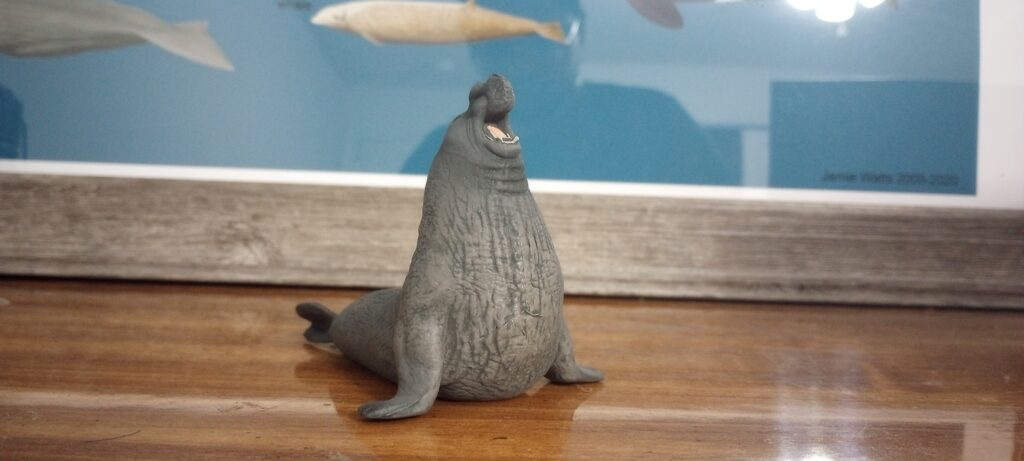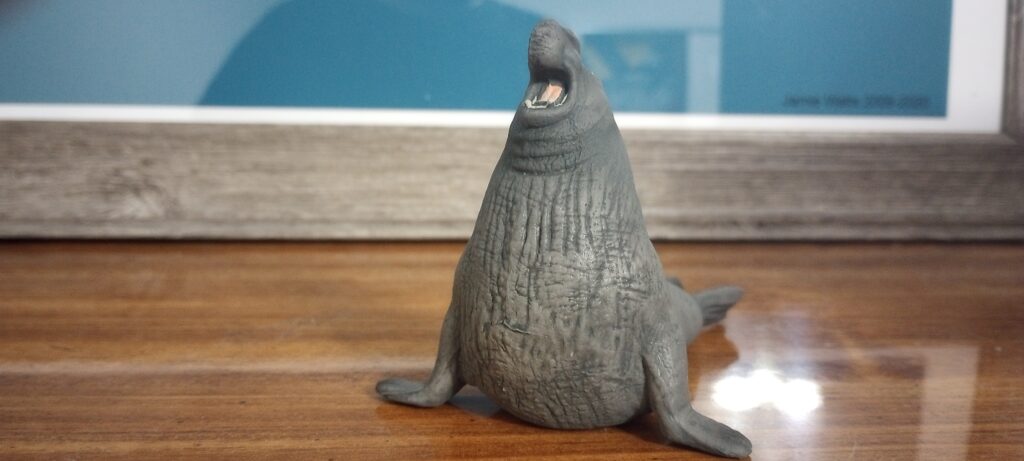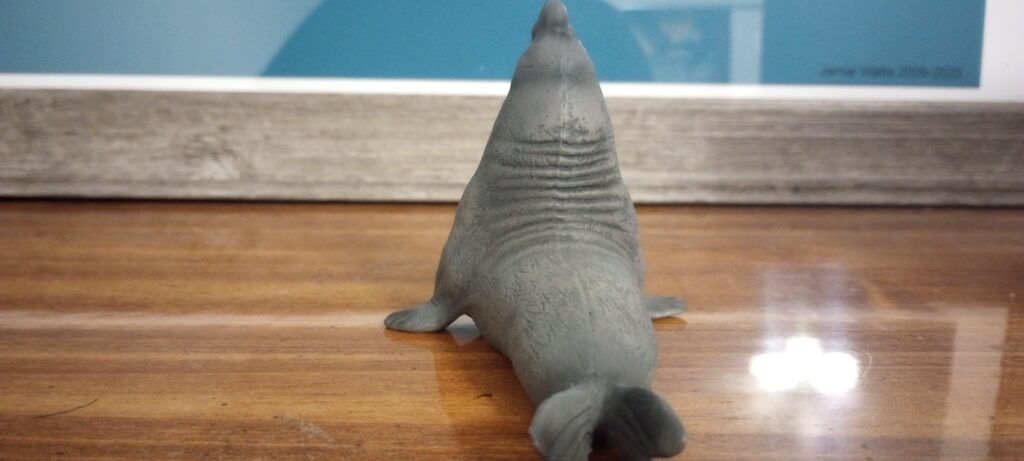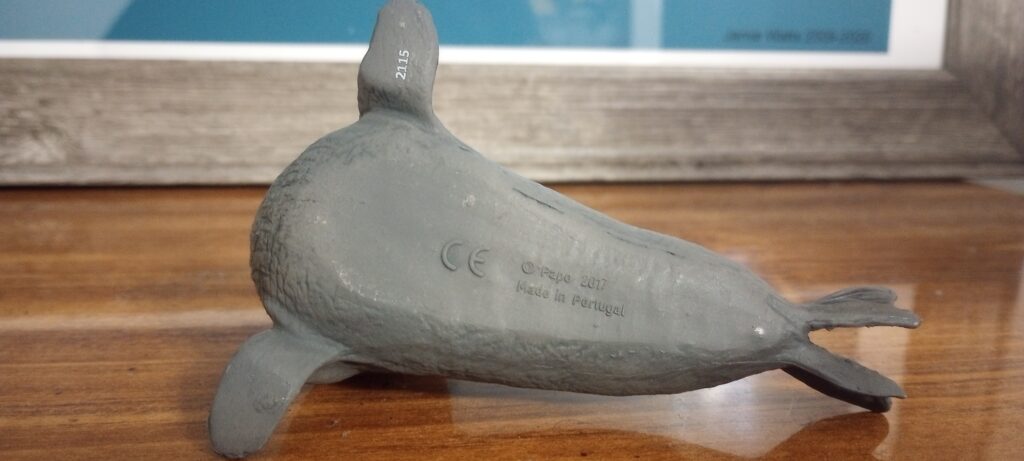The elephant seals (Mirounga spp.) are easily among the most visually striking pinnipeds. Two species respectively inhabitat the coasts of the North Pacific (M. angustirostris) and Southern Hemisphere (M. leoninae). Elephant seals exhibit the most extreme sexual dimorphism amongst pinnipeds and most mammals. The males of the southern species grow to 4.2-4.5 m on average while females are typically about 2.5-3.0 m. Males of the northern species are about 0.3-0.5 m shorter. Adult females typically weigh 200-300 kg while most males weigh around 1,500-2500 kg, with the maximum recorded weight being 3,692 kg from a 4.67 m bull. An exceptional male of over 6 m would approach 5,000 kg. This extreme sexual dimorphism is driven by reproductive competition between males. Elephant seals are among the deepest-diving marine mammals, feeding mainly on squid and fish. The intense sealing industry from the 19th and early 20th century brought both species to the brink of extinction, but both have significantly recovered. This species still faces threats from declines in prey, marine debris, vessel traffic, and climate change.

To my surprise, this is the blog’s first review of an elephant seal figure. This one by Papo was released about 6 years ago and is one of the few available for this genus. I obtained this for my collection relatively recently as elephant seals are among my favorite animals outside of whales and the basking shark.

The figure obviously depicts a mature bull, based on the rougher skin and proboscis. It’s posed with the body rearing up, as bulls iconically do when competing for harems. Along the back, the standard length (from the tip of the nose to the tail between the hind flippers) is approximately 11 cm. This precisely coincides to the average size of a fully-grown male of the southern species at the 1:40 scale. As for species identity, this figure may be reasonably assigned to either. When controlling for size, the only main difference is that the proboscis of the northern species is usually more prominent.

The wrinkled region along the chest is known as the ”shield”. This highly-calloused skin serves as an armor of sorts to protect males as they fight. It’s a slightly lighter gray than along the rest of the body on this figure, and is pretty well-textured.

The proboscis and mouth are pretty well sculpted with a decent, though not totally comprehensive paintjob. The lips, teeth and tongue are very well-defined and provide an accurate impression of how the creature appears while being extremely aggressive.

Along the back, you can appreciate the wrinkles and folds along the body, however the tail between the flippers does not appear to have been sculpted.

The underside of the figure, as with other pinnipeds figures in a terrestrial posture, is completely flat and smoothed out along the bottom.

This elephant seal just might be my favorite figure from Papo. It’s probably the best representation this genus has in the mass-production market, as I considered it superior to the Maia & Borges sculpt sold by Schleich and Mojo fun. Unfortunately, it has been discontinued for the past several years, so anyone interest needs to look along the second-hand market. Maybe with the coming of the new year, Safari Ltd. or CollectA could grace us with a new elephant seal.
Disclaimer: links to Ebay and Amazon on the AnimalToyBlog are affiliate links, so we make a small commission if you use them. Thanks for supporting us!




Great to have you back! Elephant seals are one of my favorite pinnipeds too. I wish there were more figures of them available.
I have this one databased as a Northern; I hope someone makes a nice big one that can stand in for a Southern! 🙂
That would be great. As a northern, it would fit in pretty nicely with the larger figures within the MBA collection for collectors North Pacific fauna.
This is my favorite elephant seal figure and I’m sure I’ll pick it up someday. Would prefer a Southern but with this cool pose it will do.
It’s a nice sculpt, but it’s not big enough. No elephant seal toy should be smaller than a walrus one.
Yeah, I don’t own a lot of Papo pinnipeds, so I bought this one to compare with my other marine fauna that fit more into scale. I would gladly welcome any future attempts for this genus, especially one that’s unambiguously M. leoninae.
I think you made a mistake mentioning the figure is retired. It’s still in production as it’s still up on Papo’s site